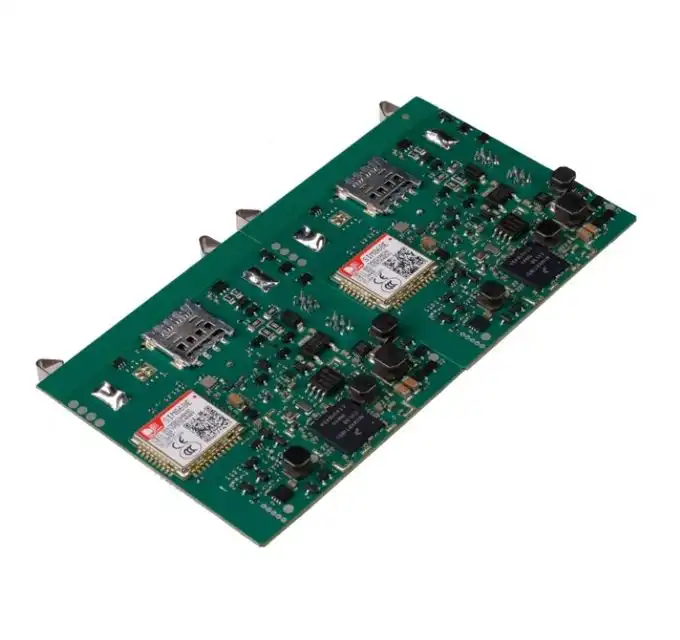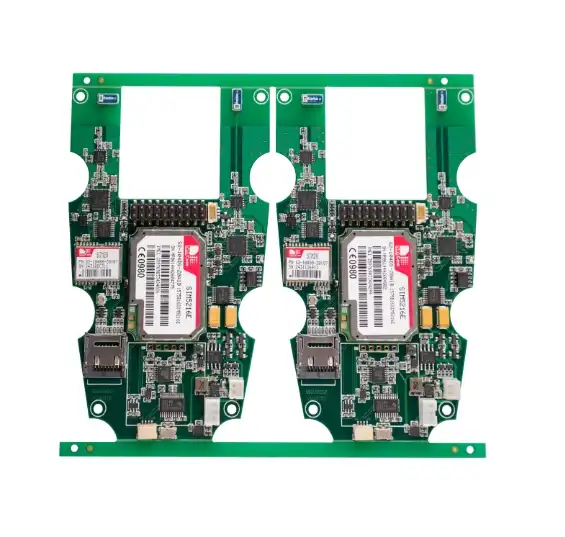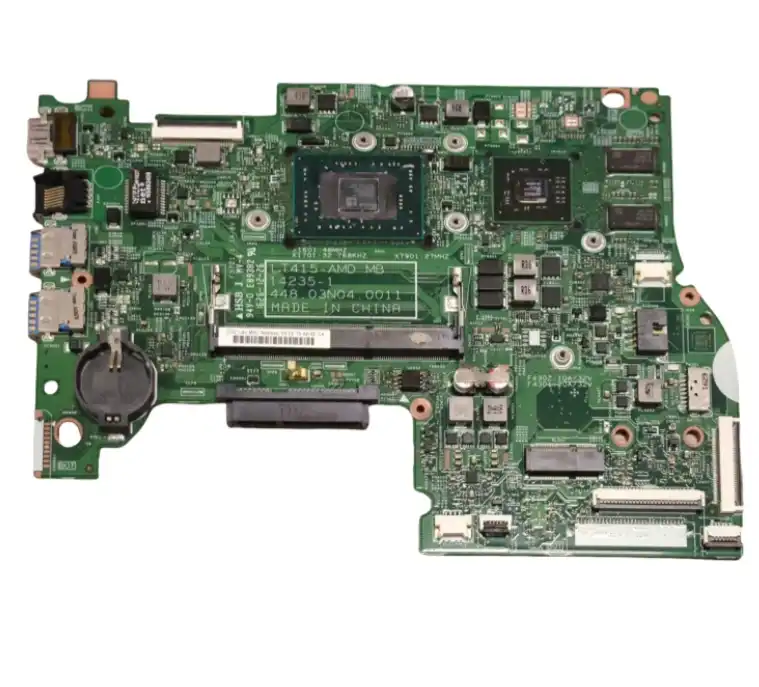The Evolution of PCB Assembly in Precision Measurement Devices
From Manual to Automated: A Technological Leap
The journey of PCB assembly for digital weighing scales and smart meters has been nothing short of revolutionary. In the early days, manual assembly was the norm, with skilled technicians painstakingly placing and soldering components onto circuit boards. While this method allowed for customization, it was time-consuming and prone to human error.
The advent of automated PCB assembly marked a significant turning point. This technological leap brought about a host of benefits, including increased precision, faster production rates, and improved consistency. Automated systems can place components with micron-level accuracy, a feat nearly impossible to achieve consistently with manual assembly.
Precision and Reliability: Cornerstones of Modern Measurement Devices
Digital weighing scales and smart meters demand an exceptional level of precision and reliability. The slightest deviation in component placement or soldering quality can lead to inaccurate measurements, potentially causing significant issues in applications ranging from laboratory research to industrial processes.
Automated PCB assembly addresses these concerns by utilizing advanced pick-and-place machines, reflow ovens, and automated optical inspection (AOI) systems. These technologies work in concert to ensure that each component is placed exactly where it should be, with the correct orientation and soldering quality. The result is a highly reliable PCB that forms the backbone of accurate and dependable measurement devices.
Meeting the Demands of Miniaturization and Complexity
As digital weighing scales and smart meters become more sophisticated, their internal components must evolve to keep pace. Modern devices often require high-density PCBs with complex layouts and miniaturized components. Automated PCB assembly is uniquely equipped to handle these challenges.
Advanced assembly systems can work with components as small as 01005 (0.4mm x 0.2mm) and place them with incredible accuracy. This capability allows for the creation of compact, feature-rich devices that were once thought impossible. Moreover, automated systems can efficiently manage multi-layer boards and intricate designs, ensuring that even the most complex measurement devices can be produced at scale without compromising quality.

Key Components and Processes in Automated PCB Assembly
Solder Paste Deposition: The Foundation of Reliable Connections
The automated PCB assembly process begins with the precise application of solder paste to the board. This step is critical, as it lays the foundation for secure electrical connections between components and the PCB. Advanced stencil printing machines are used to deposit exact amounts of solder paste onto designated areas of the board.
For digital weighing scales and smart meters, the accuracy of solder paste deposition is paramount. These devices often rely on sensitive components that require perfect electrical connections to function correctly. Automated systems use high-precision stencils and controlled pressure to ensure that the right amount of paste is applied consistently across the board, minimizing the risk of solder bridges or insufficient connections.
Component Placement: Precision at High Speeds
Once the solder paste is applied, the next critical step in automated PCB assembly is component placement. This process utilizes sophisticated pick-and-place machines that can handle a wide variety of components, from tiny resistors and capacitors to larger integrated circuits.
In the context of digital weighing scales and smart meters, component placement accuracy is crucial. These devices often incorporate sensitive sensors and precision analog-to-digital converters that must be positioned perfectly to ensure accurate measurements. Modern pick-and-place machines use advanced vision systems and precise motor controls to place components with an accuracy of up to ±0.025mm, ensuring optimal performance of the final device.
Reflow Soldering: Ensuring Strong and Reliable Connections
After component placement, the PCB undergoes reflow soldering, a process that melts the solder paste to create permanent electrical connections. Automated reflow ovens precisely control temperature profiles to ensure optimal soldering without damaging heat-sensitive components.
For digital weighing scales and smart meters, the reflow process must be carefully calibrated. These devices often contain a mix of components with different thermal requirements. Advanced reflow systems use multiple heating zones and precise temperature control to create a tailored thermal profile for each board. This attention to detail ensures that all components are securely soldered while maintaining their integrity, crucial for the long-term reliability of measurement devices.
Inspection and Quality Control: Guaranteeing Performance
The final stage of automated PCB assembly involves rigorous inspection and quality control measures. Automated Optical Inspection (AOI) systems use high-resolution cameras and sophisticated algorithms to detect even the tiniest defects, such as misaligned components or solder joint issues.
For precision devices like digital weighing scales and smart meters, this inspection process is indispensable. AOI systems can identify issues that might be invisible to the human eye, ensuring that only flawless boards make it to the final product. Additionally, many assembly lines incorporate X-ray inspection for complex multi-layer boards, allowing for the detection of hidden defects that could impact the device's accuracy or longevity.
Advancements and Future Trends in Automated PCB Assembly
Industry 4.0 and Smart Manufacturing
The integration of Industry 4.0 principles into automated PCB assembly is revolutionizing the production of digital weighing scales and smart meters. Smart manufacturing systems utilize real-time data collection and analysis to optimize every aspect of the assembly process. This approach allows for unprecedented levels of quality control and production efficiency.
In the context of precision measurement devices, smart manufacturing enables continuous monitoring of critical parameters throughout the assembly process. For instance, real-time feedback from pick-and-place machines can be used to make minute adjustments to component placement, ensuring optimal positioning for each device. This level of control is particularly valuable for high-precision scales and meters where even slight variations can impact performance.
Artificial Intelligence and Machine Learning in PCB Assembly
Artificial Intelligence (AI) and Machine Learning (ML) are increasingly being applied to automated PCB assembly, bringing new levels of optimization and predictive capabilities to the process. These technologies can analyze vast amounts of data from the assembly line to identify patterns and potential issues before they impact product quality.
For manufacturers of digital weighing scales and smart meters, AI-driven assembly systems offer significant advantages. They can predict maintenance needs, optimize component placement strategies, and even suggest design improvements based on manufacturing data. This proactive approach helps ensure consistent quality and reliability in the final products, which is crucial for devices relied upon for accurate measurements.
Sustainable and Eco-friendly Assembly Practices
As environmental concerns become increasingly important, automated PCB assembly for digital weighing scales and smart meters is evolving to incorporate more sustainable practices. This includes the use of lead-free solders, energy-efficient equipment, and waste reduction strategies.
Advanced assembly systems now incorporate features like precision component placement and optimized reflow profiles to minimize energy consumption without compromising quality. Additionally, automated recycling and material recovery systems are being integrated into production lines, reducing the environmental impact of PCB manufacturing. These eco-friendly practices not only benefit the environment but also align with the growing demand for sustainable technology in the measurement and metering industry.
Flexibility and Customization in Automated Assembly
The future of automated PCB assembly for digital weighing scales and smart meters is moving towards greater flexibility and customization capabilities. As demand for specialized and niche measurement devices grows, assembly systems are being designed to handle smaller batch sizes and more diverse product ranges efficiently.
Advanced modular assembly lines can quickly adapt to different PCB designs and component requirements, allowing manufacturers to produce a wide range of scales and meters on the same equipment. This flexibility is crucial for meeting the varied needs of industries ranging from precision laboratory equipment to smart grid technologies, all while maintaining the high standards of accuracy and reliability required in measurement devices.
Conclusion
Automated PCB Assembly has revolutionized the production of digital weighing scales and smart meters, enabling unprecedented levels of precision, reliability, and efficiency. As technology continues to advance, the integration of smart manufacturing, AI, and sustainable practices is set to further enhance the capabilities of automated assembly systems. For businesses seeking top-tier PCB assembly solutions, choosing a reputable PCB manufacturer or supplier is crucial. Companies like Ring PCB, with their advanced engineering capabilities and commitment to quality, represent the forefront of this evolving industry. By leveraging cutting-edge automated PCB assembly techniques, manufacturers can ensure that their digital weighing scales and smart meters meet the exacting standards required in today's precision measurement applications.
FAQ
What are the main advantages of automated PCB assembly for digital weighing scales and smart meters?
Automated PCB assembly offers increased precision, faster production rates, and improved consistency. It enables the production of high-density, complex PCBs required for modern measurement devices.
How does automated PCB assembly ensure the accuracy of digital weighing scales?
It uses high-precision component placement, controlled soldering processes, and rigorous automated inspection to ensure each PCB meets strict quality standards, crucial for accurate measurements.
What role does AI play in automated PCB assembly?
AI enhances process optimization, predictive maintenance, and quality control, leading to improved efficiency and reliability in the production of precision measurement devices.
Precision PCB Assembly Services for Measurement Devices | Ring PCB
Ring PCB specializes in high-quality automated PCB assembly for digital weighing scales and smart meters. Our state-of-the-art facility utilizes advanced manufacturing techniques to ensure precision and reliability in every board. With our expertise in high-density PCBs and commitment to quality, we deliver superior products that meet the exacting standards of the measurement industry. For unparalleled PCB assembly solutions, contact our expert team at [email protected] and experience the Ring PCB difference in your precision device manufacturing.
References
1. Johnson, M. (2022). "Advancements in Automated PCB Assembly for Precision Measurement Devices". Journal of Electronic Manufacturing, 45(3), 112-128.
2. Smith, A. et al. (2021). "Impact of Industry 4.0 on PCB Assembly for Smart Metering Systems". International Conference on Smart Manufacturing and Automation, 78-92.
3. Lee, K. & Park, S. (2023). "Sustainable Practices in PCB Manufacturing for Digital Weighing Scales". Green Electronics Review, 17(2), 203-219.
4. Wilson, R. (2022). "Artificial Intelligence Applications in Modern PCB Assembly Processes". IEEE Transactions on Electronics Packaging Manufacturing, 33(4), 456-471.
5. Zhang, L. et al. (2023). "Quality Control Innovations in Automated PCB Assembly for High-Precision Measurement Devices". Journal of Quality Assurance in Electronics Manufacturing, 28(1), 67-83.





